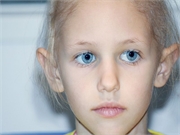Greatest gaps in life expectancy seen for those receiving radiotherapy, alone or combined with chemo
THURSDAY, Jan. 2, 2020 (HealthDay News) — Survivors of childhood cancer remain at risk for shorter life spans, especially when they receive radiotherapy, according to a study published online Jan. 2 in JAMA Oncology.
Jennifer M. Yeh, Ph.D., from the Harvard Medical School in Boston, and colleagues conducted a microsimulation model of competing mortality risks using data from the Childhood Cancer Survivor Study on five-year survivors of childhood cancer.
The researchers found that in the hypothetical cohort of five-year survivors of childhood cancer, conditional life expectancy was 48.5, 53.7, and 57.1 years for those diagnosed in 1970 to 1979, 1980 to 1989, and 1990 to 1999, respectively. These results represented a 25, 19, and 14 percent gap in life expectancy, respectively, compared with individuals without a history of cancer. The proportion of survivors treated with chemotherapy alone increased during the three decades (from 18 percent in 1970 to 1979 to 54 percent in 1990 to 1999); in this chemotherapy-alone group, the life expectancy gap decreased from 11.0 to 6.0 years. In contrast, only modest improvements were projected in the gap in life expectancy for survivors treated with radiotherapy (21.0 to 17.6 years) or with radiotherapy and chemotherapy (17.9 to 14.8 years) during the same time frame.
“Our findings highlight the need for continued monitoring of survivors’ health to manage late mortality risks and underscore the need for new therapeutic approaches to minimize early mortality risks, especially for cancer diagnoses for which radiotherapy remains a key component of therapy,” the authors write.
Copyright © 2020 HealthDay. All rights reserved.








